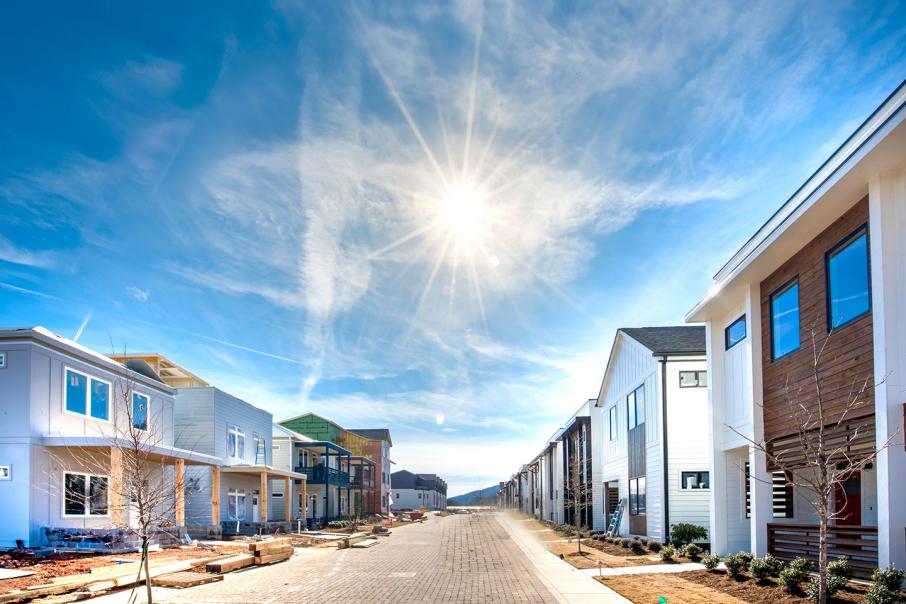

The residential development sector in WA has suffered more than its fair share of battle scars. In a market fraught with negative growth, declining land sales, stalled commencements and a contracted appetite from banks; some developers have proactively sought to understand the opportunities from emerging specialist asset classes.
One thing is clear; the lessons from other countries, coupled with the volume of capital seeking to invest into these fast maturing asset classes suggest they are here to stay and will start to re-shape the traditional development landscape. The four key specialist asset classes we have seen most direct interest in have been:
- Purpose Built Student Accommodation (PBSA)
- Build to Rent (BTR)
- Specialist Disability Accommodation (SDA)
- Residential Aged Care (RAC)
Despite the subdued levels of traditional development since 2016, our continued need for housing will be fuelled by population growth, evolving needs and increasing expectations which underpin future market demand.
Many developers are already challenging their traditional models to consider specialist developments. This has been influenced by overseas trends, pursuit of a viable development or in some instances, to satisfy a burgeoning investor appetite wanting to place capital in a specific sector.
Interestingly, these models also deliver outcomes the State government has been endeavouring to deliver
Unfortunately, the answer is not simple; each model comes with high barriers to entry by virtue of their unique revenue models and issues. Developers are being presented with a new set of challenges to sure-up a viable project. These include:
- Development Lifecycle – exposure to capital and operational risk across longer cashflows
- Design – How to achieve appropriate scale, footprint and development efficiency
- Operating – operating costs, location and target markets
- Exit – when and how to divest or realise returns
- Values – how and what to value to inform modelling, security and exit assumptions
On the positive side; globalisation has meant capital markets have been far more responsive in identifying alternative investment opportunities. The fundamental drivers that underpin such asset classes (population growth, healthcare, education,) are already targets for institutional capital looking for exposure; albeit in most cases the investment vehicles and scale of opportunity do not yet exist in Australia.
Purpose Built Student Accommodation (PBSA)
PBSA is still very much in its infancy in WA, largely due to the lack of critical mass within our CBD; however, this is likely to change over the short term with a looming ‘City Deal’ focused on addressing this very issue.
One thing is for sure, and that is the weight of international investors pursuing the sector. PBSA was responsible for the largest single property transaction in 2019 ($2bn sale of the Urbanest portfolio); in what was a highly contended sale process. WA was the only major state not to have an operating PBSA asset as part of this sale.
Build to Rent (BTR)
From 2010 - 2019 over 32,000 completed BTR units/homes, with a further 110,000 under construction or in planning in the UK. The BTR model is internationally tested and there are already a raft of global institutions wanting to place capital.
Looking at the UK experience means developers in WA should be on the front foot in understanding the types of location, scale and costs required to stand-up a viable scheme.
One of the most interesting trends we have already seen is Governments willingness to pilot BTR models as a mechanism to deliver social and affordable housing outcomes, this has been the case in NSW, VIC and QLD. These types of structured transactions are starting to become more commonplace across governments and demonstrate a refreshing willingness to innovate and find more effective ways of optimising surplus assets, constrained land or air rights.
Specialist Disability Accommodation (SDA)
The most recent of all specialist sectors, SDA has been driven directly off the back of the National Disability Insurance Scheme (NDIS). As one of the last states to transfer to the NDIS (in May 2019), WA developers are still largely grappling with how and what it means for the market.
The funding model for SDA, whilst complex, is very attractive from both a gross return and covenant perspective; however, there remain several unknowns including accessing qualifying tenants, where to build, valuation methodology and funding.
WA has the least number of registered SDA providers per capita, so there is still potential for first mover advantage to absorbing existing demand in the marketplace before it becomes too crowded.
Residential Aged Care
Residential Aged care is the most challenging of all the above areas from a development perspective. The demand drivers are clear – over 7,500 unbuilt allocated bed places, an aging population, aging aged care stock base; the majority of which is sub-scale or over 30 years old so will need replacing. Couple this with an asset rich operator base, strong credit appetite and competitive construction pricing and it is difficult to comprehend why there is not far more activity.
The key barrier is new projects cannot be developer driven and require partnership or takeout by a licensed operator in an industry that has been constrained by a Royal Commission, funding cuts and low impetus for organisational change to drive replacement and delivery of infrastructure.
The long-term outlook is positive, the Royal Commission is likely to force structural change and increase funding to the system. Aged care facilities are capital intensive, for operators to bridge the growing supply gap, most will need a scalable mechanism to drive development delivery and recycle capital. There is already strong interest from developers and investors to achieve this; however, no ‘exemplar’ commercial model exists that adequately balances requirements of both operator and investor/developer.
Whilst delivery of new aged care has increased in recent years, there is still a feasibility shortfall in fringe/outer suburbs where most of our aging population reside. This will continue to restrict progress until a viable solution is achieved.
Overall, the private sector and WA Government will need to work together if we are to solve the challenges of unlocking specialist residential development in WA















